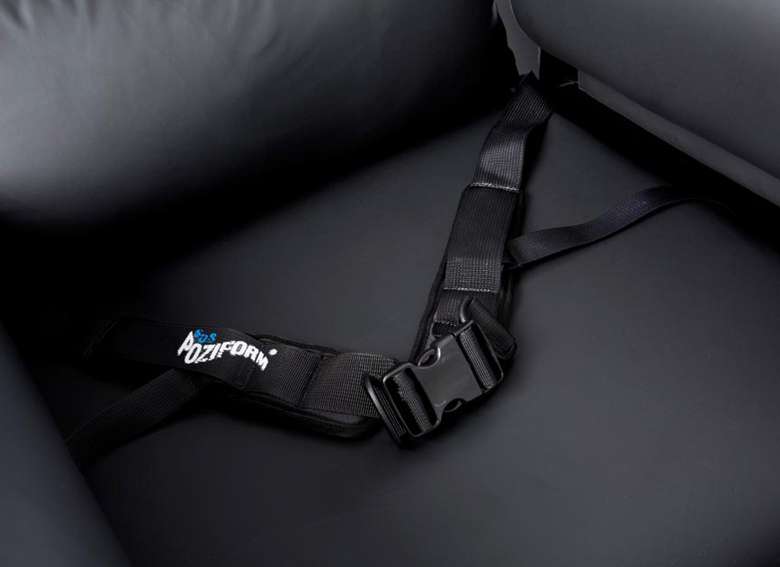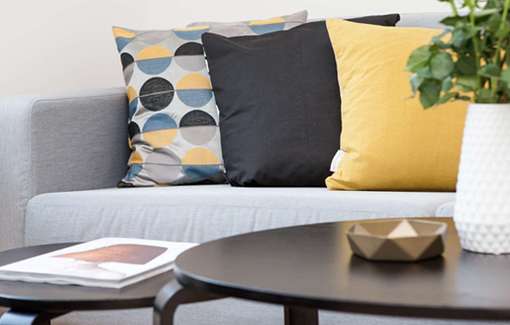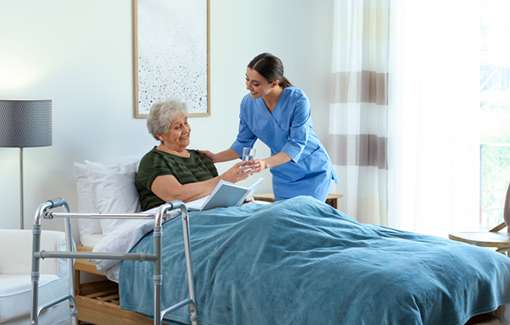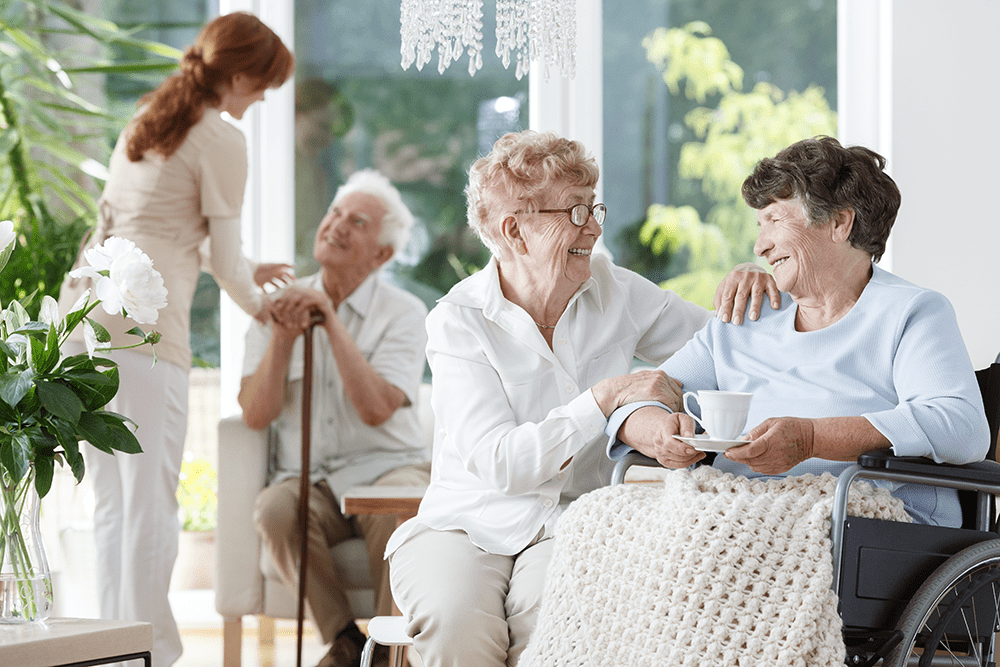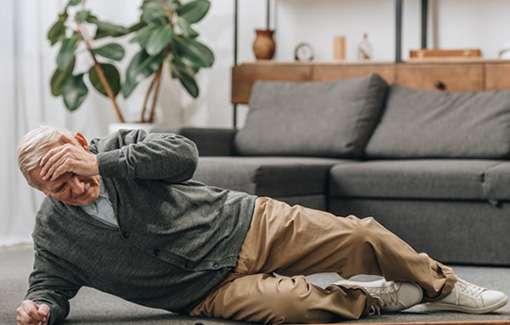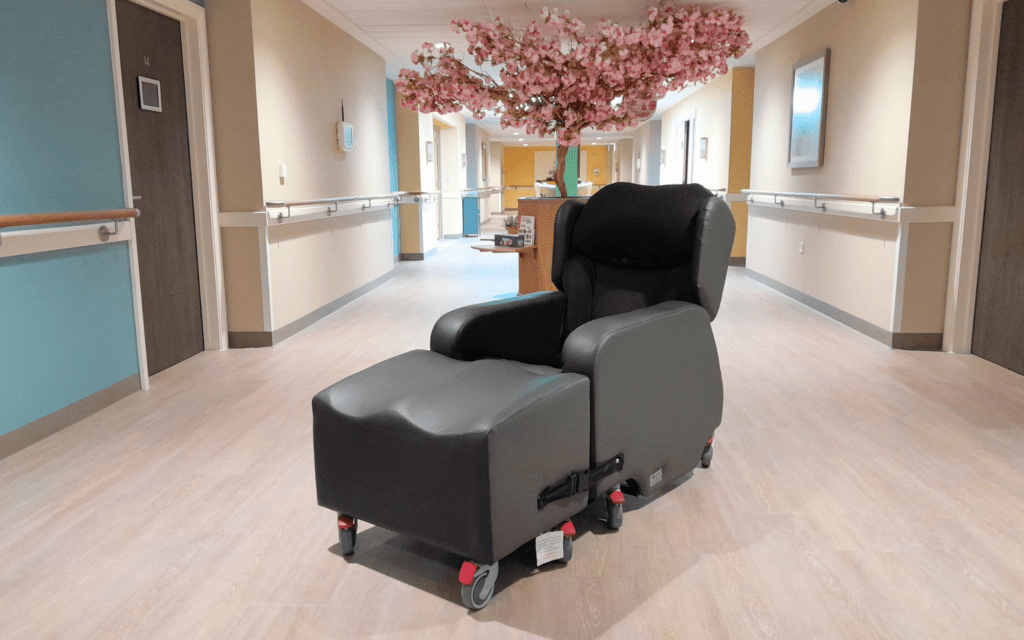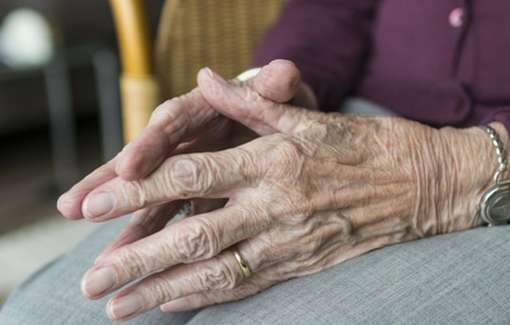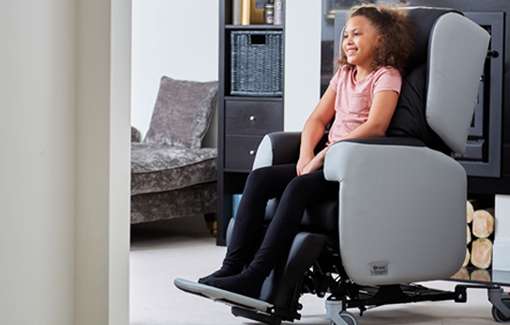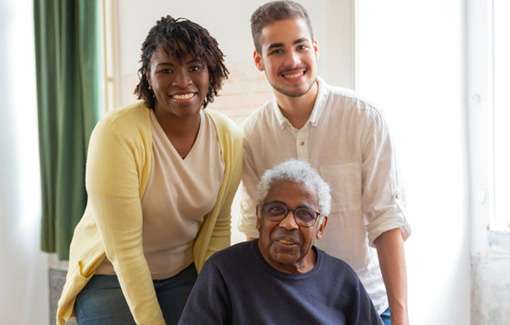The use of restraints is a sensitive subject when it comes to specifying specialist seating. This is understandable. The idea of someone being strapped into their chair seems unpleasant, and restraints should certainly never be used as a substitute for proper care and attention. However, there are situations where chairs with restraints may be necessary for the safety and appropriate care of individuals with physical or learning disabilities.
Here, we review some alternative solutions that should be considered before using chairs with restraints. It’s important to remember that restraints should only be used after careful consideration when they are deemed necessary to ensure someone can remain safely seated!
We then run through some of the different scenarios where restraints can benefit individuals’ wellbeing and care whilst seated.
Jump straight to…
What do we mean by restraints?
Before we get into the ethics and practicalities of using restraints, we should define what we mean when we talk about chairs with restraints.
Some people are alarmed when they hear about chairs with restraints being used in SEN schools or care homes. They picture someone bound to a chair by their wrists and ankles — like something you might see in a TV drama. But rest assured, that’s not how specialist chairs with restraints work in care settings!
The two main restraint options for specialist seating are:
- Lap belts — 2-point or 4-point options
A 2-point belt attaches to the chair in two locations whereas a 4-point belt attaches in four locations. 4-point belts typically offer greater postural stability. - Harnesses — chest or full harness options
A chest harness uses straps around the chest, and sometimes shoulders, to stabilise the upper torso. A full harness still supports the upper torso but has additional straps around the hips/groin to help stabilise the pelvis too.
These kinds of restraints are designed to provide additional support and stability rather than solely to keep someone in their seat.
Alternatives to chair restraints
When considering which other options might be more suitable than restraints, there are two key questions you should ask:
- What risks are you trying to minimise?
- Is the person mobile?
What risks are you trying to minimise?
Generally, there are four main reasons why care professionals might consider using chairs with restraints:
- Someone tends to pace or wander and is at risk of injuring themselves or going outside and getting lost.
Leaving a care facility unaccompanied can be dangerous, especially for people with dementia, impaired vision or cognitive impairments. An individual could encounter hazards or be unable to find their way back. - Someone is physically abusive and poses a risk to others.
When caring for an individual, care environments also have a responsibility to protect staff and other vulnerable individuals. - Someone is unsteady on their feet and risks falling if they get up from their chair.
If someone falls whilst standing up, they could seriously injure themselves. - Someone consistently leans to one side in their chair or is at risk of sliding out.
If someone slides out of their chair completely, they could injure themselves falling to the floor. But prolonged leaning or sliding also means the spine is not properly aligned whilst seated. This can worsen any existing postural issues and can even cause permanent deformities.
Restraints keep someone securely in their chair whilst maintaining correct seating position. This can help minimise all four of the risk factors above.
Is the person mobile?
If using restraints can help to prevent falls, injury, poor posture and deformities, then why do we need to factor in someone’s mobility before using them?
The issue is that using restraints has its own negatives, and they are often more apparent in people with good levels of mobility.
If someone is mobile, then using a chair with restraints can…
- Restrict their active movement whilst seated. This can make it difficult for them to get comfortable or reposition themselves.
- Cause distress. If they try to struggle against the restraint, they may injure themselves on the straps.
- Reduce their independence by taking away their ability to get up unaided.
- Reduce their mobility levels over time if they stop performing sit to stand movements regularly.
Generally, if someone can stand and move in their chair independently, restraints should only be used as a last resort. All other options to keep people safe and sitting correctly should be tried first.
Fortunately, there are therapeutic, environmental and equipment interventions you can try as an alternative to restraints.
Let’s have a look at some options for each of the risk factors we mentioned earlier:
Alternatives for people who pace or wander
| Therapeutic intervention | Environmental intervention | Equipment intervention |
| Assess any triggers for pacing/wandering | ‘Stop’ and ‘Go’ signs to encourage individuals to stay where it’s safe | Door guards |
| Provide companionship | Create safe wandering paths | Bells that signal when external doors open |
| Provide plenty of opportunity for activities | Create a safe outside courtyard |
Alternatives for people who become abusive
| Therapeutic intervention | Environmental intervention | Equipment intervention |
| Identify any triggers for anger and distress | Create designated quiet areas | Provide relaxing sensory devices e.g. lights/lava lamps |
| Avoid sensory overload | ||
| Provide a regular routine |
Alternatives for people who are unsteady when standing
| Therapeutic intervention | Environmental intervention | Equipment intervention |
| Evaluate medication which may cause gait issues | Ensure there is adequate lighting | Ensure their footwear fits properly |
| Provide exercises to aid balance and sit to stand movements | Remove trip hazards e.g. rugs | Provide an indoor walker trolley to support them while standing up |
| Install floor alarms and get a fall assistance device so you can quickly assist them if they fall |
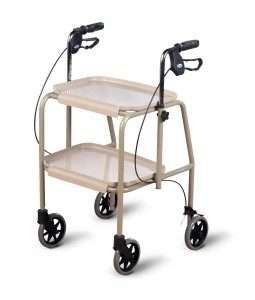
A Walker Trolley can help someone to stay steady on their feet when getting up to avoid falls
Alternatives for people who lean or slide
| Therapeutic intervention | Environmental intervention | Equipment intervention |
| Carry out a seating assessment to ensure their chair fits them correctly | Choose a chair with tilt-in-space so they can be repositioned regularly to prevent sliding | |
| Request a physio/OT referral to assess the cause of the leaning | Use pommel cushions or wedges to encourage correct sitting position. | |
| Increase visual monitoring | Install floor alarms and get a fall assistance device so you can quickly assist them if they fall |
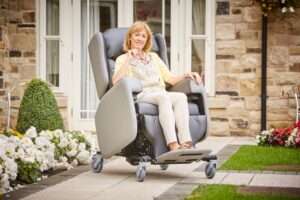
Tilt-in-space is included as standard on the Lento care chair
When should you use chair restraints?
For people of all mobility levels, chair restraints can be uncomfortable and distressing if not used properly. However, after carefully considering the options, there will be cases where using a chair with restraints is necessary and can lead to long-term benefits.
If you think restraints are necessary, here are a few more things you should check before proceeding:
- Does the use of restraints, in this case, comply with your organisation’s guidelines?
- Have you consulted with the individual’s primary care team? E.g. parents, OTs etc.
- Have you identified the most appropriate restraint for their individual needs? I.e. lap belt vs. harness
When you can answer ‘yes’ to those three questions, it’s likely you’ve found a case where chair restraints are necessary to properly care for someone whilst they are seated. It’s also recommended that you always document the reasons why you made that decision.
Here are two examples of when chairs with restraints are typically used in care settings:
- For people with weak body control who are physically unable to achieve correct pelvic positioning and posture without the extra stability a belt provides.
- For children who are still developing and are at high risk of deformities/postural abnormalities if they do not maintain proper midline positioning.
In these cases, lap belts and harnesses are an effective addition to an individual’s care plan. Restraints are being used to improve their wellbeing rather than to keep them confined to their seat.
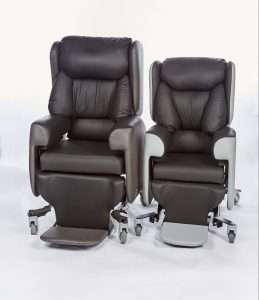
Belts and harnesses can be easily added to our Lento and Little Lento care chairs to provide extra stability for adults and children when needed.
Summary
Chairs with restraints are a controversial topic when it comes to specifying specialist seating. Stories of them being used inappropriately have hit the headlines over the years. But, is it ever appropriate to use chairs with restraints? There are cases where restraints are necessary to keep someone safe and in the correct sitting position. However, it is important that the decision to use restraints is only made after careful consultation with an individual’s primary care team. This guide covers alternatives to chair restraints and outlines scenarios where physical restraints can be the best option to achieve long-term benefits and quality of life for individuals with physical or learning disabilities.





